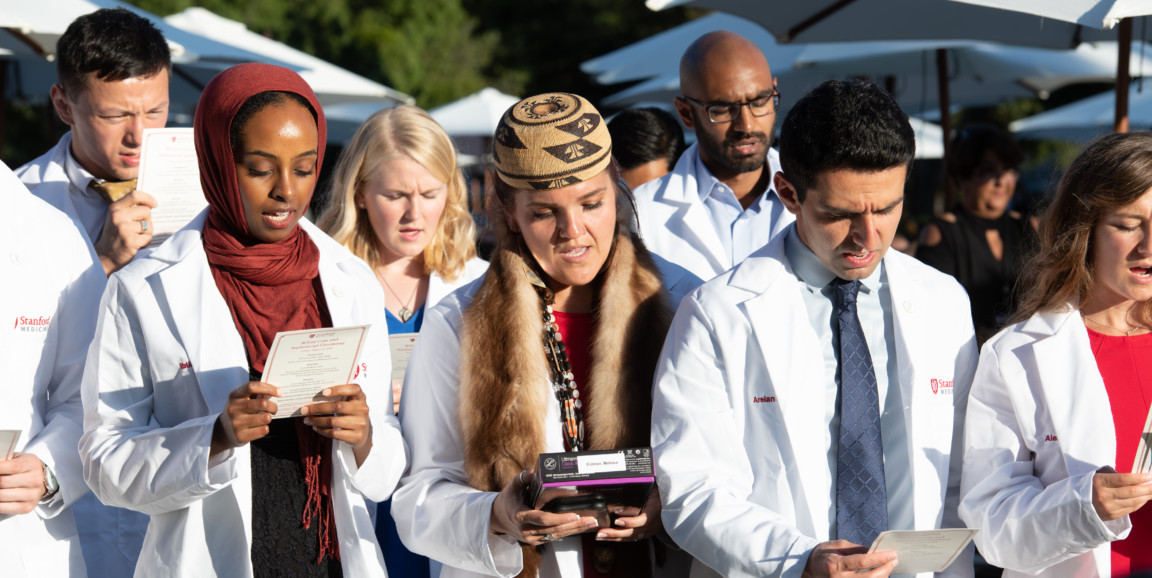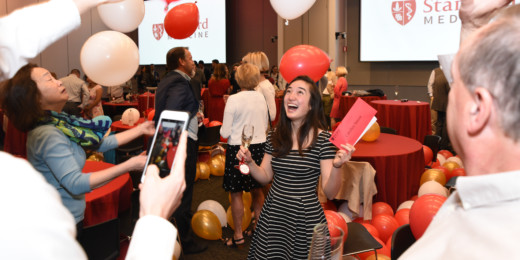Wearing a red dress, a basket cap, abalone shell earrings and a mink pelt, Melissa Eidman strode up to the microphone during the School of Medicine's white coat ceremony and announced her home town: Weitchpec, California.
Weitchpec, in the state's far northwestern corner, is the home of her ancestors, the Yurok Tribe. Her accessories are traditional garb; the pelt is a family heirloom. Eidman grew up in Sacramento, but once she's a fully trained physician, she plans to return to the Yurok reservation to care for its residents.
"I'm excited and honored to be wearing it," Eidman said of the white coat. The coat is new, but for Eidman, Stanford isn't: she transferred as an undergraduate after spending years at community college. "It's been quite a long haul," she admitted.
Ninety MD students donned white coats for the first time at Friday's ceremony outside the Li Ka Shing Center for Learning and Knowledge. In a separate event earlier in the afternoon, 28 physician assistant students also put on new coats Friday to mark the beginning of their 30-month master's program. Each white coat had the student's name embroidered on it; all the students also received stethoscopes.
"By all accounts, you are among the most accomplished people on the planet," Dean Lloyd Minor, MD, told the MD students. "When you receive your coat and stethoscope, you're showing your willingness to run toward crises and not away from them."
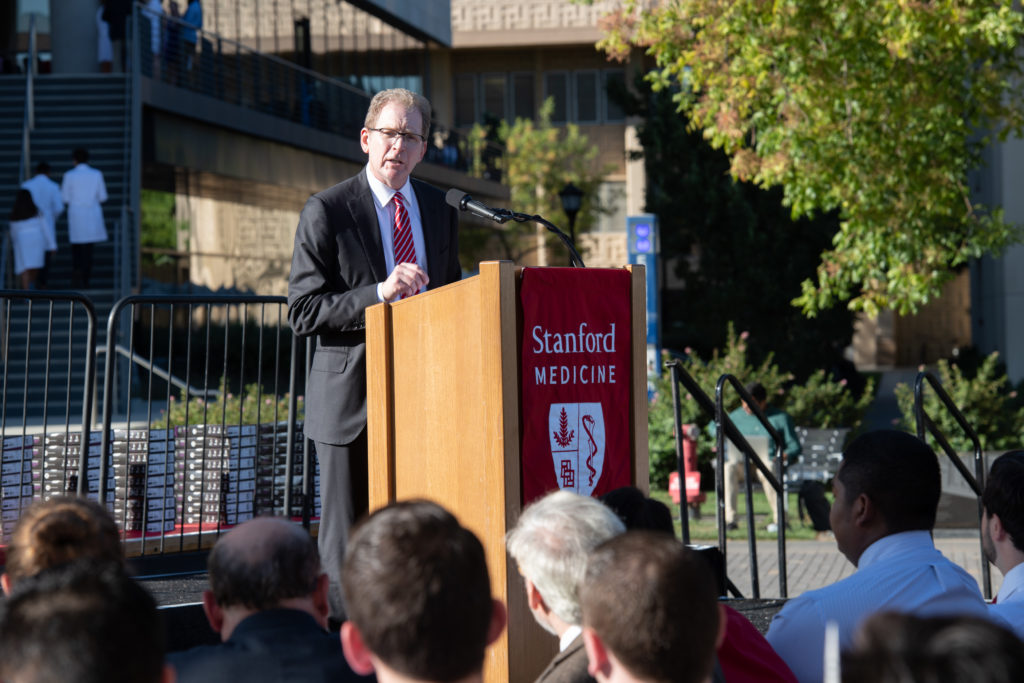
The MD students hail from New York, Houston and nearby Redwood City; Kazakhstan, Venezuela and England. The class of 2023 is among the most diverse in Stanford's history, with 26% who identify as an ethnicity under-represented in medicine, 34% who were born outside the United States and 8% who are LGBTQ.
Many students said they would need to get used to wearing the white coat. "It feels really surreal," said Ibtihal Elfaki, from Sudan and Chicago. "It's something I've aspired to since high school."
"The idea of being a medical student has been abstract for a long time," agreed Samson Peter, from San Mateo, California. "But this coat makes it all very tangible."
They also felt the burden of responsibility that the white coat carries -- "an overwhelming sense of accountability," as PA student Alexander Noonan noted.
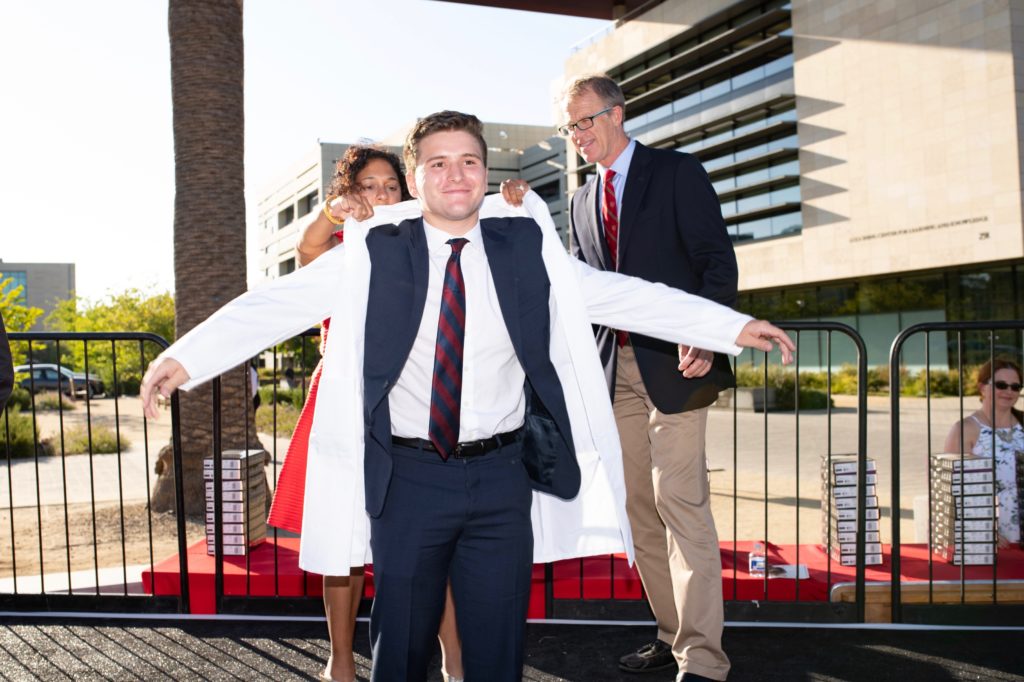
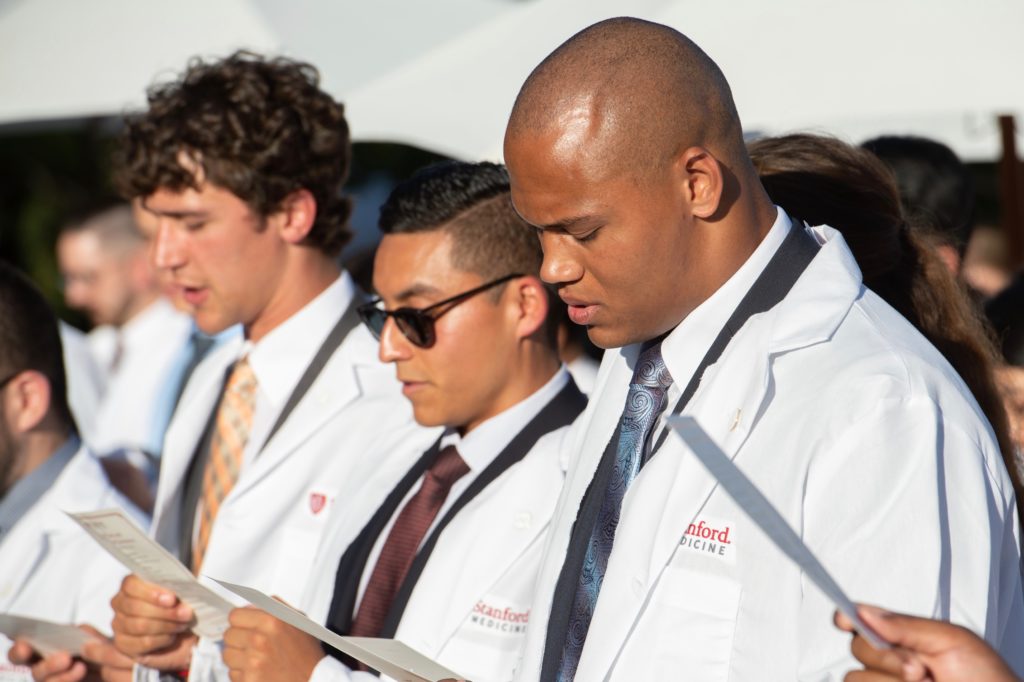
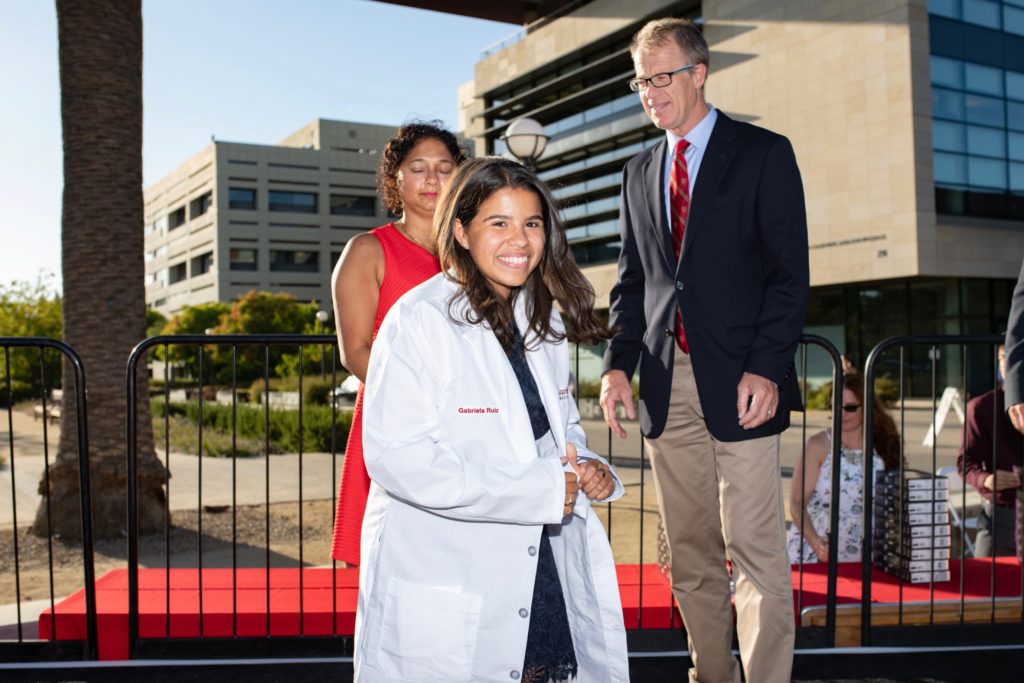
Students received white coats, then read the Stanford Affirmation.
Speakers at both ceremonies acknowledged the students' competitiveness, but cautioned that they must set that tendency aside if they are to learn and grow during their time at Stanford.
"Now is the time to work together and help each other out," said Zachary Stone, a third-year PA student, at the PA ceremony.
Kimberly DeBruler, a third-year medical student, warned the new MD students that they would fail along the way. "Don't worry about doing medical school right," she said. She also encouraged them to reach out to students who appear to be struggling. "Check on each other. Text that person who didn't make it to the party, or who stopped coming to class."
Faculty speakers reminded the students that caring for patients calls for compassion as well as scientific knowledge. Abraham Verghese, MD, professor of medicine, told the PA students that he learned the difference between healing and curing from his own PA when he was practicing in El Paso, Texas. When the PA took him to the home of a young man dying of AIDS, he asked, "What are we doing here?" She responded, "We're not here to do anything. We're just here to be with the patient."
He realized that their visit signaled to the patient that his caregivers would not abandon him. In the days before there was an effective treatment for AIDS, he said, "We could heal when we could not cure."
Arturo Molina, MD, president of the Stanford Medicine Alumni Association, described the relationship between physician and patient as "sacred." He told the MD students that they would need to practice empathy.
"You will see patients who have had their dreams shattered by illness," he said. "They will remind you not to take anything for granted."
At the receptions after the ceremonies, as the new students started feeling more comfortable in their new garb, they said they were looking forward to the years ahead.
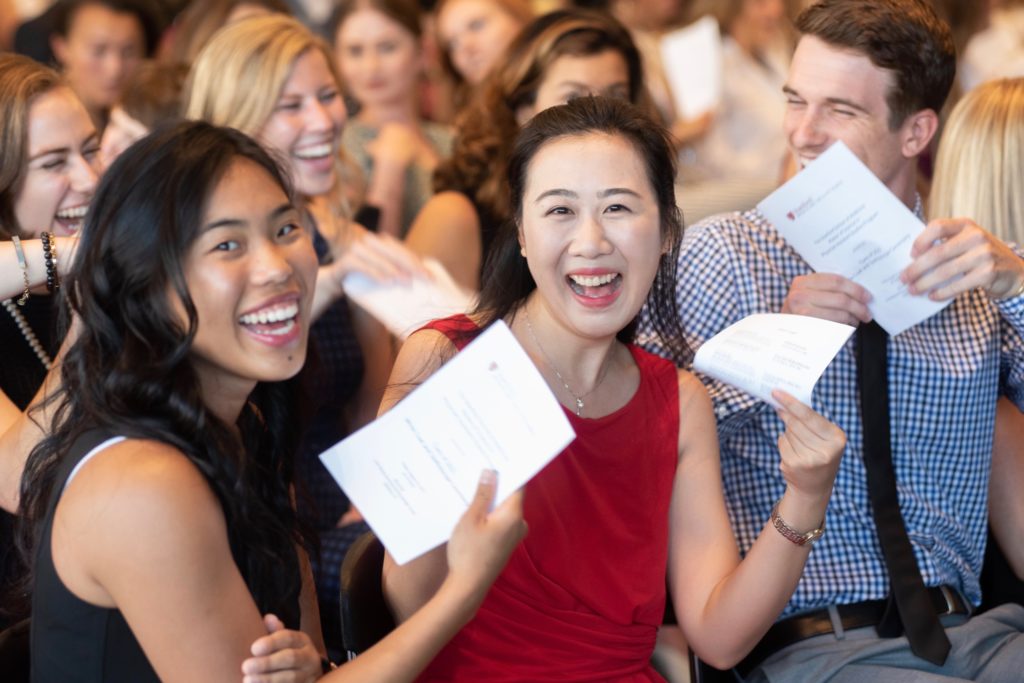
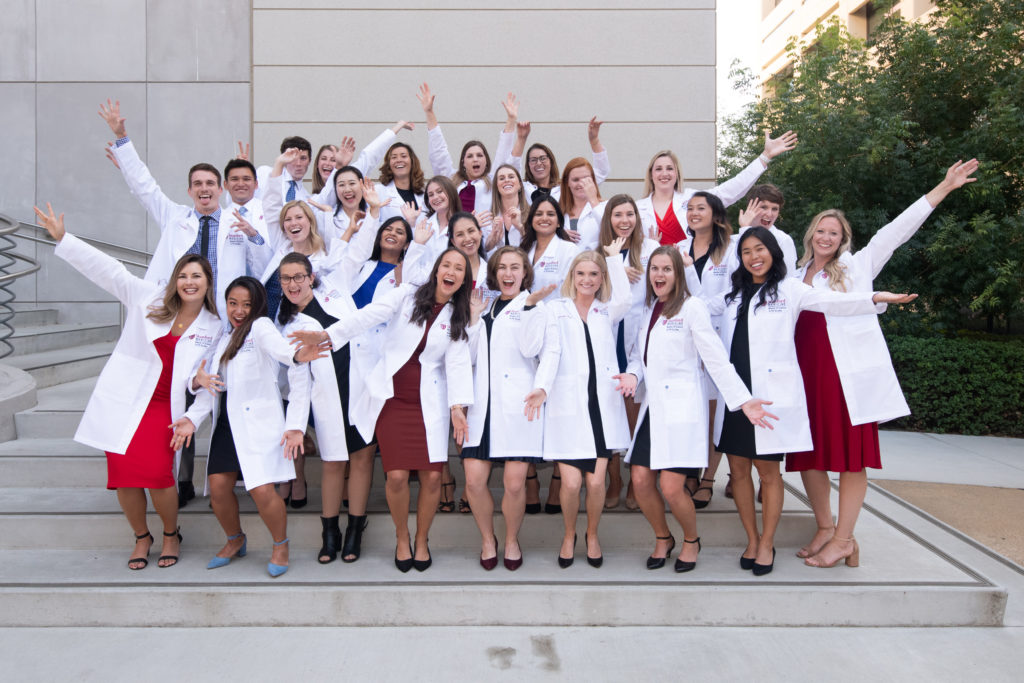
PA students shared laughs and posed for a class photo.
"I'm eager to get back to being with patients," said PA student Alex Topmiller, who worked at a dermatology clinic before arriving at Stanford. "I can't wait for the clinics."
Photos by Steve Fisch


